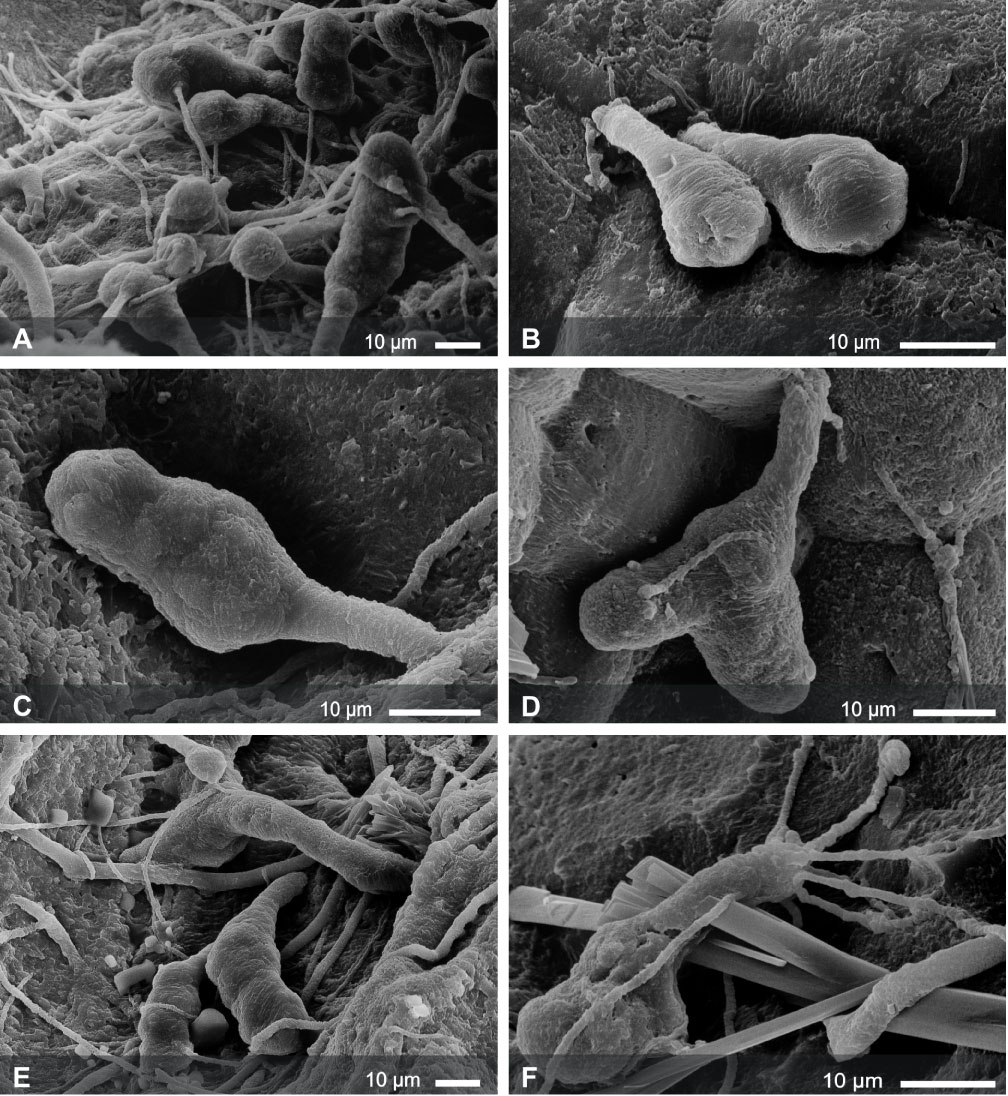
Figure F9. Saccomorpha clava (SEM images of resin casts of boreholes) produced by the fungus Dodgella priscus. Thin filaments interlinking individual S. clava specimens contain hyphae. They emerge from the sacks and/or the base of the necks, attached to the substrate surface. A, B. S. clava occurs in clusters of mainly club-shaped sacks (Morphotype 3). S. clava occurs as (C) scattered straight sacks (Morphotype 1) or (D) large individual branched sacks (Morphotype 4). E, F. Saccomorpha cf. clava, a trace also produced by the fungus D. priscus is longer and slightly thicker than S. clava. E. The trace is developed as clusters of curved sacks (Morphotypes 2 and 3). F. S. cf. clava is developed as a large individual branched sack (Morphotype 4). S. clava was found in all three substrates (coral, coralline algae, and microbialite), whereas S. cf. clava was found in corals and microbialites.

Previous | Close | Next | Top of page